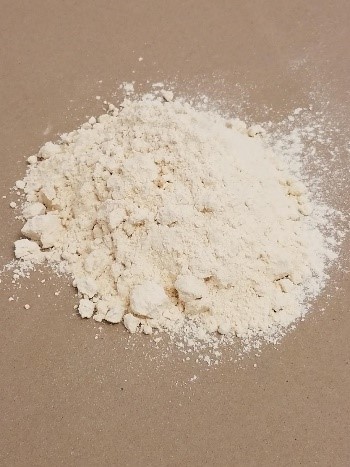If you plant corn or soybeans you are either adding talc, graphite or Fluency Agent Advanced from Bayer Crop Science, as a lubricant. Talc is dusty, white, chalk-like material that poses a
health risk if inhaled and graphite is a dusty, black, soot-like material—both are routinely available from your equipment dealers.
Fluency Agent Advanced is also a seed lubricant that improves planter performance while reducing the amount of dust potentially released during planting. It is an alternative to talc, graphite and talc/graphite-blended seed lubricants. Each product reduces static friction between individual seeds and materials they touch, improving flow and singulation during planting.
And now, there is the option to purchase a soybean-based seed lubricant. Dave Kloostra and Brian Tulley formed
Low Mμ Tech in 2011 to develop
Dust, a product derived and processed

from soy protein. They have spent the past 8-years working on product formulation, testing and readying for a commercial launch in 2018.
Kloostra said Dust (patent-pending) is a replacement for talc and graphite and provides low static friction between surfaces while not creating a cloud of dust that trails your planter or could potentially be inhaled. “Our product particles are round or oblong, providing less static friction compared to other agents whose particles are jagged. You can envision Dust as micron-sized roller bearings improving the flow of seed. Several university trials have shown that Dust performs equally well to current products and has no negative impact on seed germination or emergence.”
Ajay Sharda, Ph.D., Agricultural Engineering at Kansas State University, evaluated the fluency of Dust with funding from the United Soybean Board (USB). Sharda said, “Dust is equally good as talc and graphite on seed flowability and we achieve the same level of corn seed singulation as other commercial product on all the different seed metering mechanisms.”
Sharda’s research showed no differences between Dust when compared to talc, graphite and Fluency Agent Advanced on corn seed singulation. “Regardless of speed or population, Dust gave 98-99% singulation, the desired industry standard. However, Dust provided slightly better singulation with soybeans.”
Tulley said the benefits of using Dust are that it is a soy-based and renewable resource, creates less dust than talc or graphite, is biodegradable and is priced competitively with other fluency agents.
Dust is derived from soy protein, a renewable resource, and when in full production will utilize 4 million bushels of soybeans. While it is slightly more expensive than talc and graphite, growers would be buying a product they produced originally and will increase demand for soybeans.
One of the concerns of using seed treatments and lubricants is the dust they create and their impact on the environment and operator. Tulley said their product solves the issue associated with talc and graphite and is comparable to Fluency Agent Advanced, which is touted for its ability to reduce dust. And one of the side benefits is if you get it on your clothes you call literally “dust” it off. It won’t smear like talc and graphite.
“Dust comes directly from soybeans, a renewable resource, and is biodegradable in the soil,” said Tulley. “It has a 4-5 year shelf life once processed and packaged, yet in the soil we see no signs of it after 28 days.”
While Dust is a seed lubricant, they have observed a stimulating effect on early seedling development. “We are seeing faster green up and early plant vigor when our product is used but we don’t claim to have a benefit to yield,” stated Tulley. They are in the process of having some universities evaluate this biological response.
Dust’s use rate is 4 to 6 oz per unit of seed. Currently, they are setting up a network of dealers across the Corn Belt who will offer this product. To learn more about Dust and how to purchase it visit
https://lowmutech.com/.
A reader sent an email asking “whether Dust is harmful to bees or is an allergen?” Brian Tully, managing partner with LowMuTech said, “We are a manufactured soy protein product that is a spherical shape so when airborne it doesn’t abrade wings of bees. And Dust is a food source for the bees due to the protein content and does not have a negative impact on pollinators. However Dust is a soybean product so could be an allergen to those allergic to soy products.”
Soybean agronomist Daniel Davidson, Ph.D., posts blogs on agronomy-related topics. Feel free to contact him at djdavidson@agwrite.com or ring him at 402-649-5919.
 from soy protein. They have spent the past 8-years working on product formulation, testing and readying for a commercial launch in 2018.
from soy protein. They have spent the past 8-years working on product formulation, testing and readying for a commercial launch in 2018.

 and then
and then